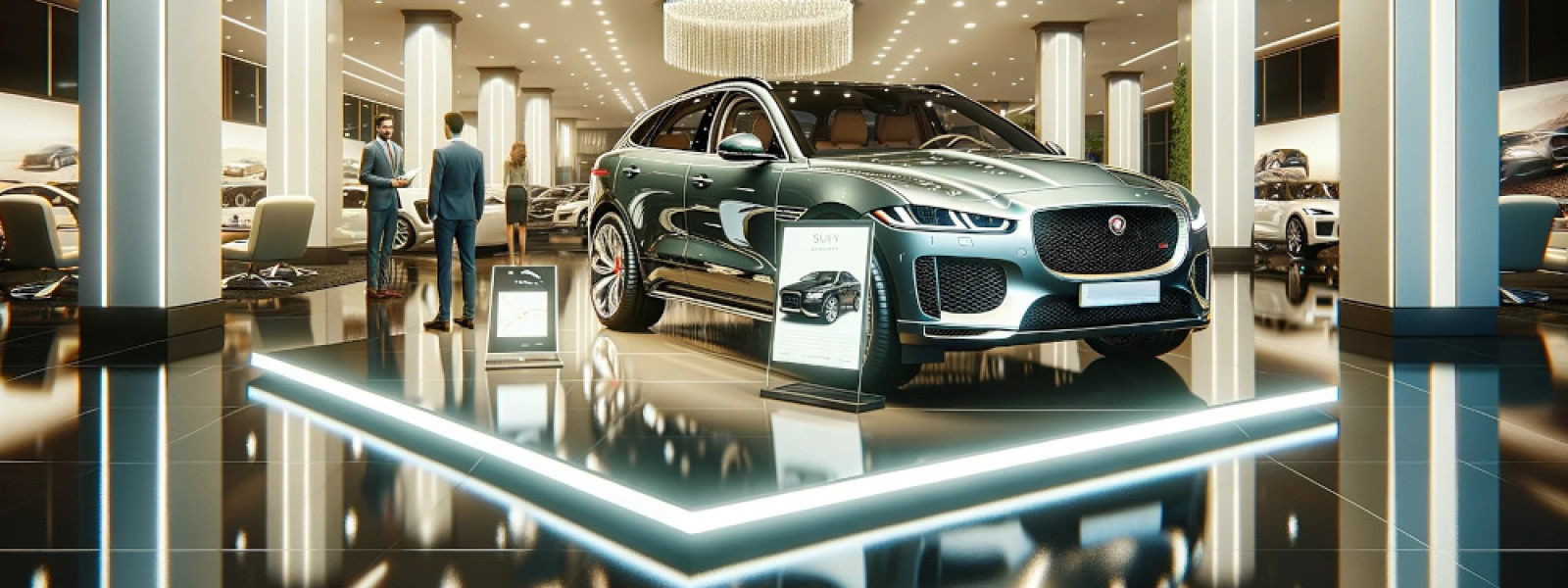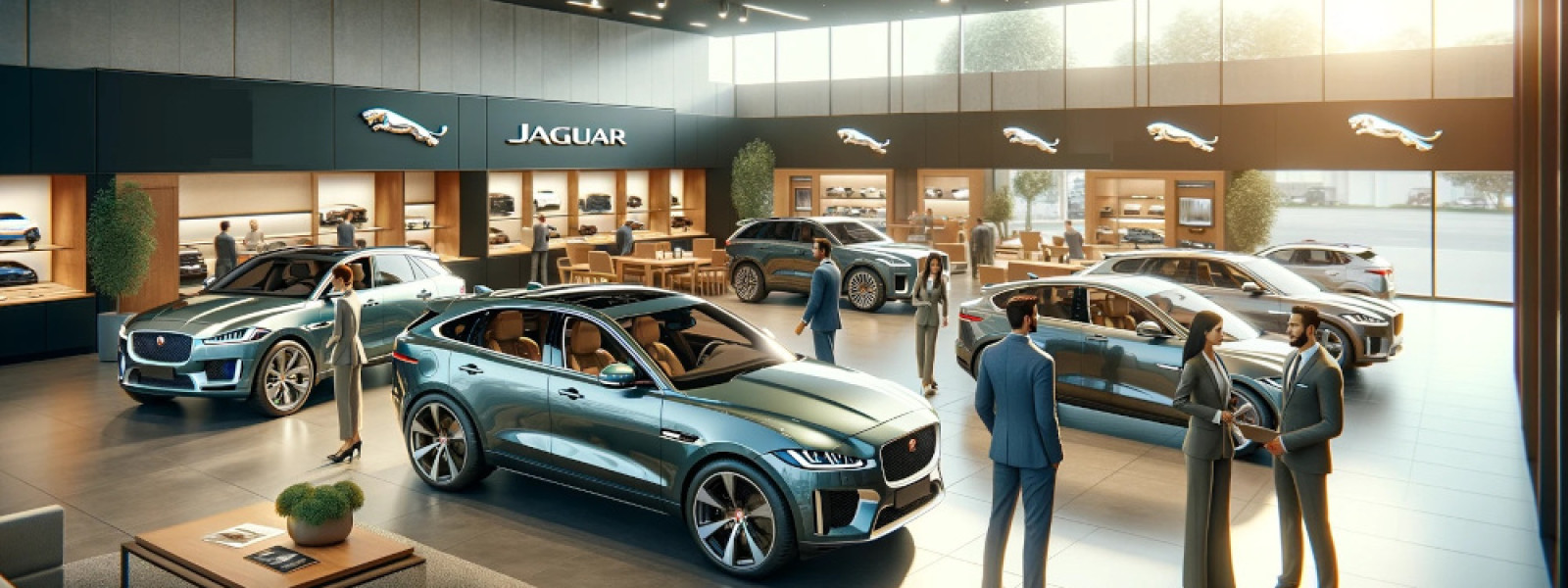Essential Aspects to Evaluate When Buying a Jaguar SUV or Crossover

Key Takeaways
Distinction Between SUVs and Crossovers: SUVs are generally designed for off-road capabilities, larger size, and more rugged use, while crossovers are sleeker, compact, and less likely to be equipped for off-roading. Jaguar’s lineup offers both, blending the features of both categories.
Jaguar SUV Models: The E-Pace is Jaguar’s compact SUV, offering a more affordable option, while the F-Pace delivers more power and cargo space, making it ideal for off-road use. The I-Pace stands out as an all-electric model, combining innovation and performance.
Technical and Lifestyle Considerations: When choosing a Jaguar SUV or crossover, key factors include engine performance, fuel type (electric, hybrid, or gas), drivetrain, technology, and cargo space. Lifestyle factors, such as off-road needs and urban driving, should also guide your decision.
Summary: Essential Aspects to Evaluate When Buying a Jaguar SUV or Crossover
When buying a Jaguar SUV or crossover, it's essential to evaluate the model's size, engine performance, and drivetrain, as well as your lifestyle needs such as cargo space, towing capacity, and off-road capabilities. Additionally, consider the vehicle's fuel type, technology features, safety ratings, and maintenance costs to make an informed decision.
If you’re setting out to buy an SUV or a crossover, you might have noticed that the terms are often used interchangeably. But there are subtle differences between the two.
A sports utility vehicle (SUV) refers to a range of vehicles that are designed for the streets but fitted with off-road capabilities. Many SUVs come with all-wheel drivetrains, sit high above the ground, and are larger than other cars.
A crossover, on the other hand, refers to SUVs that can be either compact or full-sized. Crossovers are less likely to be four-wheel drives and are sleeker in appearance.
But if you, like many other customers, are looking for a range of cars that combine the best of both worlds, look no further than Jaguar.
The prestigious British manufacturer has a nearly 90-year legacy of creating some of the world’s finest automobiles. Its current lineup of vehicles, which can be categorized as both crossovers and SUVs, is no exception.
Each of Jaguar’s three new models, the F-Pace, the I-Pace, and the E-Pace, has its own unique key specs, fuel types, and price tags.
Confused by the options?
Wondering what Jaguar SUV should I buy?
Then, read on for an in-depth comparison.
Jaguar SUV/Crossover Models Overview
There are currently three Jaguar SUV cars. Here’s a brief overview of each.
Jaguar E-Pace: The manufacturer’s most compact SUV, the Jaguar E-Pace, boasts a sleek body, all-wheel drive, and a more affordable price tag.
Jaguar F-Pace: The first F-Pace was introduced in 2017. Since then, it’s earned a reputation for its state-of-the-art technologies, power-packed performance, and massive trunk capacity.
Jaguar I-Pace: In 2018, Jaguar introduced the I-Pace as its first all-electric crossover. The award-winning car has since set new standards with its quick acceleration, sleek body, and all-wheel drive.
Now, as Jaguar plans to become an EV-only manufacturer by 2025, the Jaguar I-Pace will become even more important — inspiring the next generation of electric vehicles.
For customers, it’s crucial to note that while all three cars will go out of production when Jaguar’s transition to EVs is finally complete, they will still continue to be on sale.
Understanding Different Types of SUVs
What is the best Jaguar SUV to buy?
What is the best SUV to buy? Before we get to the answer, we need to understand the distinction between the types of SUVs: Compact (crossover), midsize, and full-size.
As its name suggests, the compact SUV is the smallest of the three, and the most efficient. While crossovers are durable, they bear more similarities to cars than trucks, and are not generally suited for off-roading.
Meanwhile, midsize SUVs can handle slightly rougher terrain and offer more legroom for the driver and passengers. At the same time, they’re not too big for the streets —striking a balance between power and convenience.
Full-sized SUVs, on the other hand, come with complete off-roading capabilities, and have more in common with a truck than a car. They can be used to tow and haul, and offer more stability - especially when it’s slippery outside.
It’s important to keep in mind that Jaguar doesn’t have any full-size SUVs, with the largest F-Pace straddling the line between midsize and large class, the I-Pace, a mid-size SUV, and the E-Pace the most compact of the lot. So, depending on where you live and what you need the vehicle for, it’s crucial to identify which model best fits your requirements.

Technical Aspects to Consider
On the technical side, there are considerations to make, too. Especially with regard to:
Engine Performance and Specifications
Jaguar E-Pace: Has a 2.0L 4-cylinder engine and produces up to 296 horsepower and 295 lb-ft of torque
Jaguar I-Pace: Has a dual motor, 90 kWh battery, and produces up to 394 horsepower and 512 lb-ft of torque
Jaguar F-Pace: Has either a 2.0L 4-cylinder, 3.0L 6-cylinder, or 5.0L V8 engine, and produces up to 550 horsepower and 516 lb-ft of torque.
Transmission and Drivetrain
All three cars in Jaguar’s SUV lineup come with all-wheel drive, which makes them capable of tackling all kinds of terrain, including the icy conditions in large parts of Canada.
The F-Pace has an 8-speed automatic transmission, while the E-Pace has a 9-speed auto transmission, making both accelerate faster than their manual counterparts. Meanwhile, the Jaguar I-Pace electric vehicle doesn’t require conventional transmission, delivering sustainable acceleration with no lag or gearshift interruptions.
Technology
Both the F-Pace and the E-Pace have 11.4” infotainment screens equipped with Jaguar’s Pivi system. They’re packed with a host of features, including wireless software updates, live apps with 4G data plans, and even an app to control your car remotely.
The I-Pace also boasts the Pivi Pro infotainment system, which offers similar features as the Pivi along with a self-learning navigation that shows you where the nearest charging station is, how much it will cost, and how long it takes to charge.
All three cars also have varying levels of driving assistance, including features like lane keep assist, overspeed warning, and forward collision warning. They are also all equipped with Jaguar OBD ports, which help find and solve issues before they become more expensive to fix.
Fuel types
Electric vs hybrid vs gas SUVs, how do you decide?
Gas cars are affordable, but worse for the environment - electric vehicles, meanwhile, are more cost-effective in the long run, but need a higher initial investment.
On the other hand, hybrid vehicles strike the middle ground — they lower emissions through features like regenerative braking and cost.
Requirements and Lifestyle Considerations
Before making such a big investment, it’s also crucial to look into your specific lifestyle requirements. For instance, how big does the vehicle need to be?
For context, the F-Pace has the largest cargo space — up to 1,727L, if the rear seats are folded — and is capable of towing a camping trailer or small boat with ease. The E-Pace has cargo space of up to 1,415L when the rear seats are folded, while the I-Pace has 1,444 L. Both have a much less towing and hauling capacity than the F-Pace.
It’s also crucial to consider whether you’re going to be driving in urban areas, off-road, or across long distances. The F-Pace, for instance, is best suited for off-roading among the three, while the I-Pace may not do so well on long journeys, due to its limited range.
Beyond these considerations, ask yourself: what should I know about fuel efficiency in Jaguar SUVs? Maintenance costs? Longevity?
Researching each of these factors can help impact your decision. For example, only some know that the F-Pace costs significantly more to keep and maintain than the E-Pace, even though it is more fuel efficient.
Versatility and Safety Features
Each of the three Jaguar crossovers is capable of handling a wide variety of road conditions — including snow and ice. In fact, some have called the I-Pace one of the best EVs to drive in cold conditions. The F-Pace, meanwhile, as the heaviest model, is the sturdiest and offers exceptional handling no matter the conditions.
Regarding safety, there isn’t much to choose between the three options. Both the E-Pace and the F-Pace score high on luxury SUV safety ratings, earning a maximum of five stars in the Euro New Car Assessment Program (NCAP) crash tests. The NCAP also awarded the I-Pace 91% for adult occupant protection, 81% for child occupant protection, and 81% for safety assist features.
Safety is a paramount consideration when looking for a car for the entire family, and all three new Jaguar SUVs rank high in this regard.
Buying Advice
After you’ve identified the best time to buy a car, the question remains: New vs used Jaguar, which one should you opt for?
Of course, both have their own benefits — with used Jaguar crossovers needing a lower upfront investment, but new cars offering more reliability. The final decision then, more often than not, boils down to price.
So, how much is a Jaguar SUV?
The E-Pace starts at around CAD 56,000, while the F-Pace starts at CAD 67,000. The I-Pace, meanwhile, starts at upwards of a hefty CAD 100,000. If you live in Canada, this also opens you up to certain government EV incentives.
Nonetheless, considering these figures, it should be no surprise that buyers will have to research and compare various SUV financing options before finalizing a purchase. The good news is that all three models come with a three-year warranty when bought new, and there’s also an option to extend this warranty for an additional 12 months.
However, if you are still planning to buy SUVs used, we recommend following these tips to negotiate with car dealers:
Do your research
Shop around and get several quotes
Buy an SUV that is at least two years old (as they are still relatively new but have a drop in resale value.)
Conduct a pre-purchase check from an authorized mechanic
Maintenance and Upkeep
While all Jaguar SUV reliability concerns are low, the value of regular maintenance still cannot be understated. Such services are critical for several reasons — including the fact that Jaguar suspensions are notorious for developing issues, and that addressing common Jaguar repair issues can help significantly extend the lifespan of your SUV.
So, once you’ve bought your new car, we recommend your first course of action be to locate a Jaguar mechanic near you — preferably one with the required expertise and experience in dealing with luxury SUVs and crossovers.
If you’re looking for the perfect service, look no further than Westminster Motors. Our team of British Automotive Luxury experts carry out warranty-compliant repair and service for Jaguar SUVs and crossovers across North York, Ontario.
Have any more questions related to Jaguar E-Pace features or Jaguar F-Pace performance? Need a pre-purchase Jaguar inspection? For any queries, don’t hesitate to reach out to Westminster Motors today.
Author: Avo Demirjian